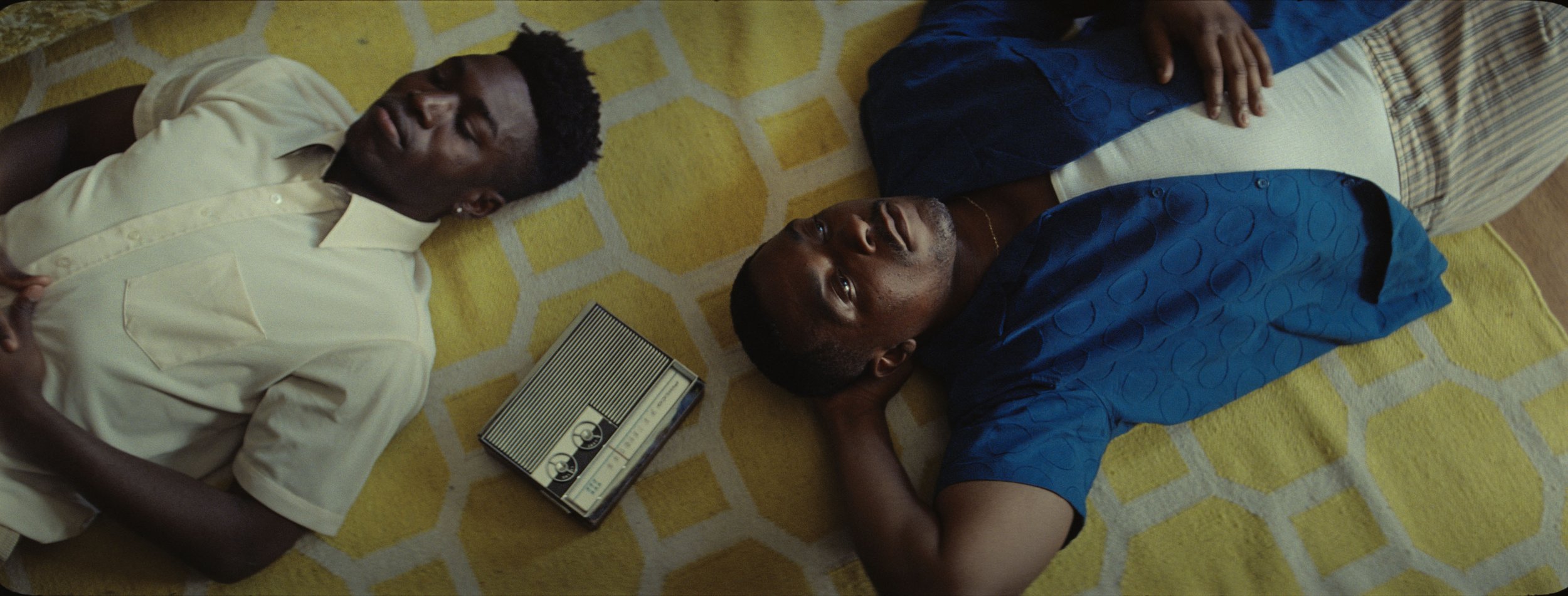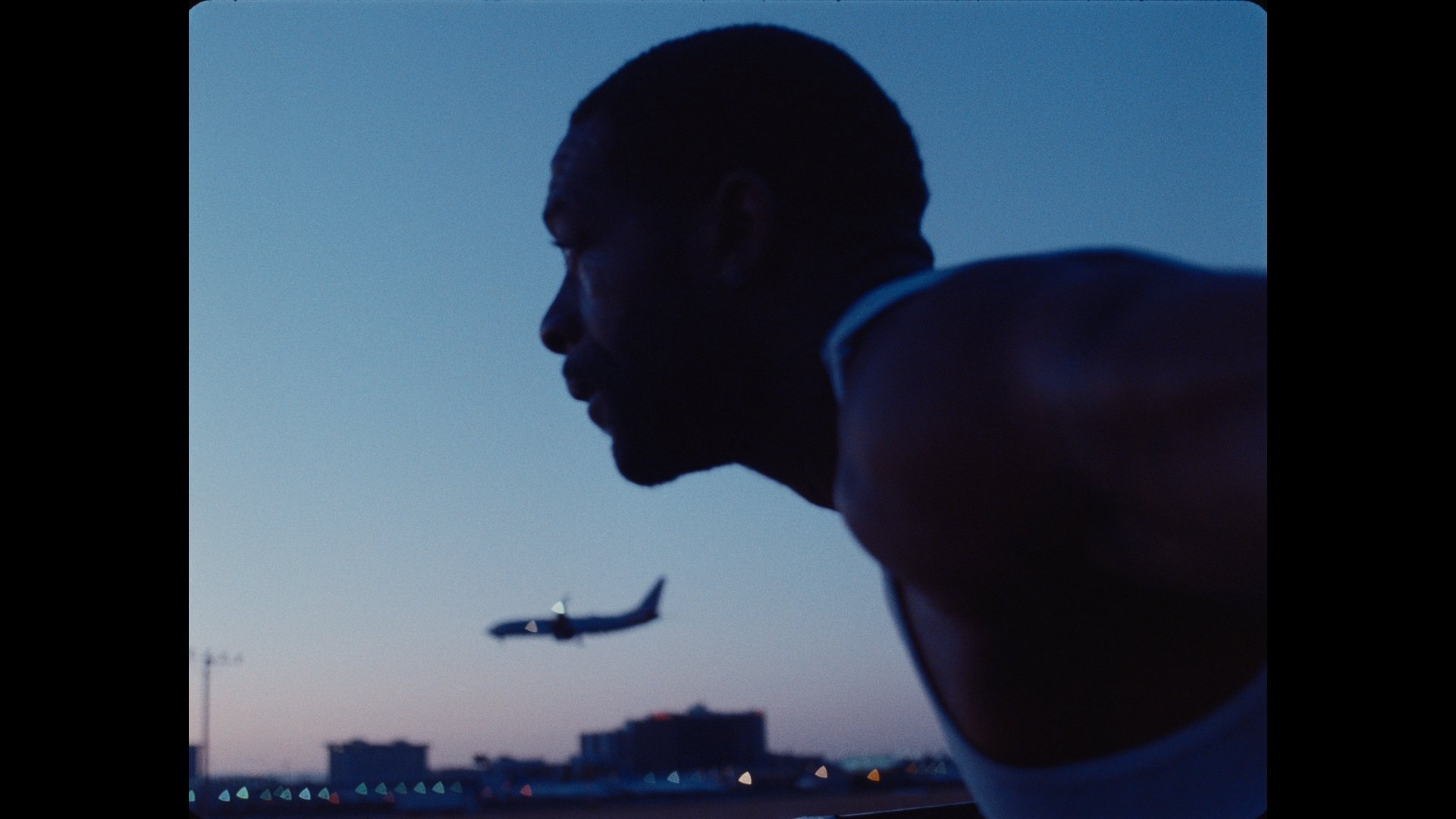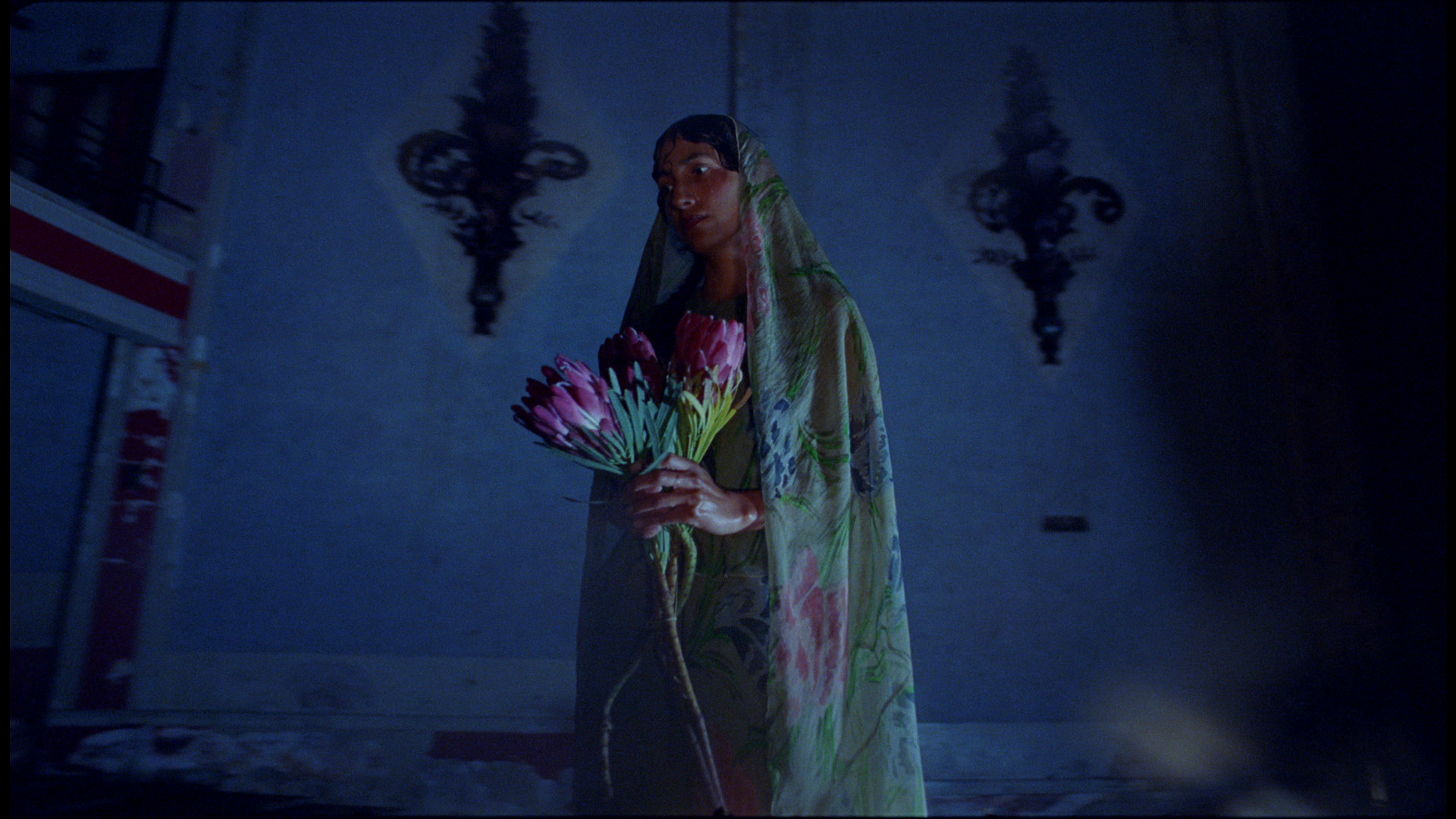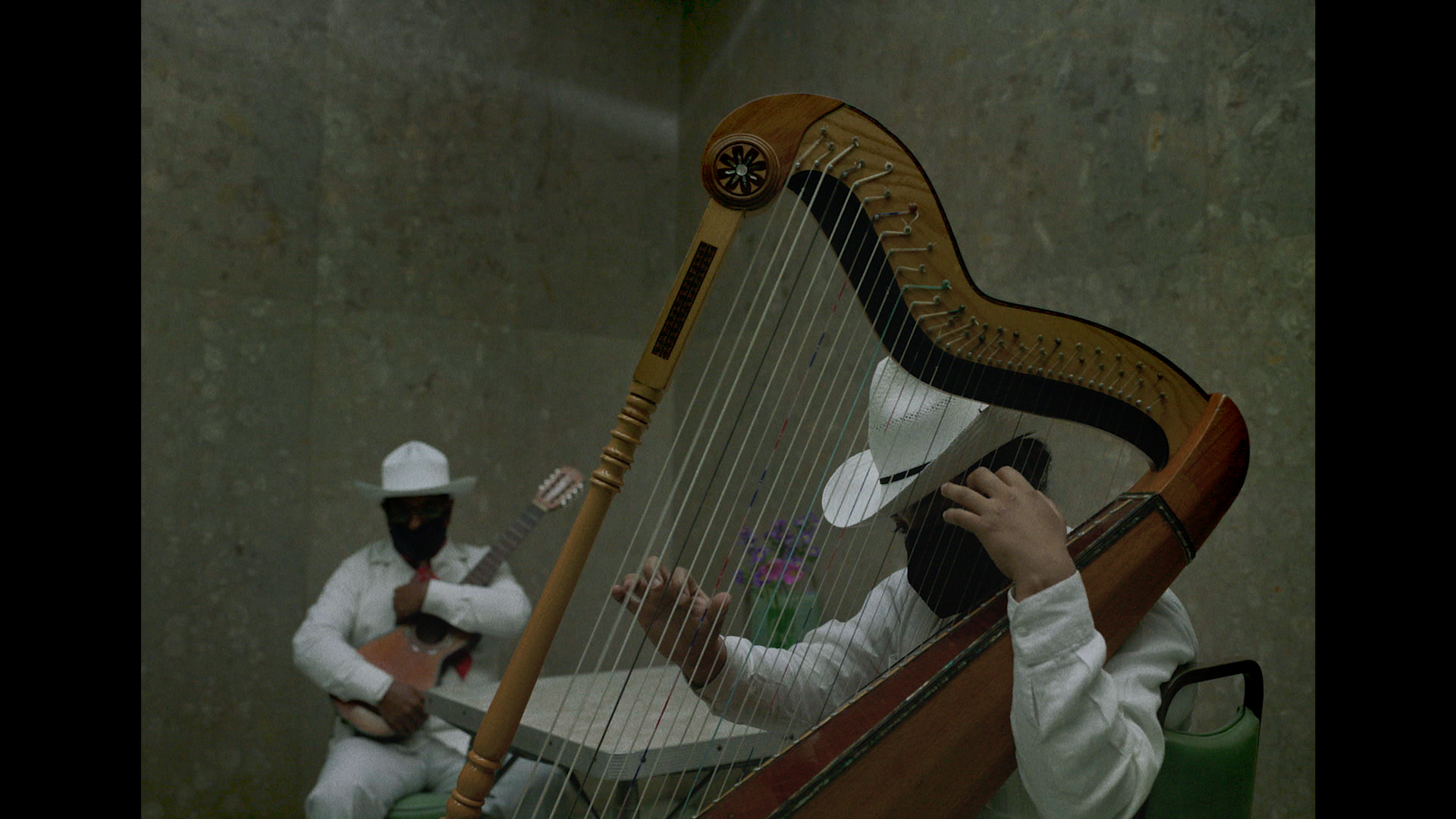Kya Lou
Still, Soñadora (2021) directed by Stacy Gaspard.
ABOUT THE ARTIST
Kya Lou is a multi-media artist working in Los Angeles. She graduated from UCLA and uses her experience in sculpture and photography to inform her work as a colorist. An early student project “What Do You Do ‘Fore It’s Gone?” examines the effects of gentrification in the Black neighborhoods in South Los Angeles by overlapping materials and mediums, bringing together textiles, audio, video, and still images. In 2017 Lou began development of Coloured Only, a postproduction color studio, which is committed to “proposing radical alternatives within post production.”
Not only has Lou’s more recent work been screened at the Blackstar Film Festival, La Biennale di Venezia, The Whitney Biennial, Tribeca Festival, as well as The International Film Festival Rotterdam, but several projects she has been a part of have gone on to be nominated for awards: A Love Song for Latasha (2019) was nominated for the Best Documentary Short Oscar in 2021; Pachinko (2022) garnered an Emmy nomination for Outstanding Title Design, a Pena de Prata nomination for Best Opening Credits, an OFTA nomination for Best Title Design; and If I Go, They Will Miss Me (2022) won the Short Film Grandy Jury Prize at Sundance.
In addition to her film work, Lou also has a growing body of commercial projects and has worked with Adidas, Telfar, Miu Miu, and Calvin Klein among others. Lou has collabortated with Khalil Joseph on BLKNWS®, an ongoing conceptual news program.. Across Lou’s journalistic, artistic, and commercial works, there is a distinct focus on geographies, movement, and how space is constituted by color. In earlier interviews and artist talks, Luo emphasizes the influence of photography on her work and the ways in which many of her projects are shaped by her desire to learn the geographies, both spatial and historical, that she lives in. Rather than straight-forward documentation, Lou’s color work gestures towards to processes of locating community history and knowledge.
SELECTED WORKS
Colorist
HAWA: Gemini (2022)
The New York Times: Independent Journalism—Questlove (2022)
Pachinko: Opening Title (2022)
Lila Drew: Bad Juice (2022)
If I Go They Will Miss Me: Trailer (2022)
Toro y Moi: Déjà Vu (2022)
Olivia Rodrigo: Good 4 u (2021)
Jennifer Hudson: Here I Am (2021)
The Light of Black Sunlight (2021)
Soñadora (2021)
A Love Song for Latasha (2019)
Colorist — Commercial
Miu Miu: Women’s Tales #23 (2022)
WalkGood LA x OnRunning: “Cloudnova Form” (2022)
Credit Karma: “Heidi Hiderson” (2022)
Square, “Open Everywhere” (2022)
Adidas, “AdiClub” (2022)
Duracell, “Mastermind” (2022)
Credit Karma: “Pat on the Back” (2022)
Adidas, “Jessamyn” (2022)
Beats, “Kayvon” (2022)
Crypto, “Bravery is a Process” (2022)
Adidas, “Hoyeon” (2022)
Teflar, “Telflar x Team Liberia” (2021)
Calvin Klein, “Sage & Vinson” (2021)
Calvin Klein, “Megan Thee Stallion” (2021)
Adidas, “Wales Bonner x Adidas SS21” (2021)
Snapchat, “Inclusive Camera” (2021)
Editor
BLKNWS® (2021)
Selected Interviews
Kae, Darol Olu. “Different Shades of Metadata: an interview with Kya Lou. Seen. Summer, 2022. https://www.blackstarfest.org/seen/read/issue004/kya-lou-interview-colorist/#seen-toc
Braunschweiler, Marco. “Marco’s Island w/Kya Lou.” NTS Radio: Marco’s Island. April 27, 2018. https://www.nts.live/shows/marcos-island/episodes/marcos-island-27th-april-2018
James, Randy. “Kya Lou asks, ‘What Do You Do ‘Fore It’s Gone?’” FEM. April 27, 2017. https://femmagazine.com/kya-lou-asks-what-do-you-do-fore-its-gone/
Artist Talk
“Documenting Los Angeles: A Conversation with Alima Lee and Kya Lou.” Art + Practice. April 25, 2019. https://soundcloud.com/user-182764493/documenting-los-angeles-a-conversation-with-alima-lee-and-kya-lou-042519
THEORETICAL CONTEXTS
1. Photographic and analog practices in film
Smith, Shawn Michelle. At the Edge of Sight. Durham: Duke University Press. 2013.
Barthes, Roland. Camera Lucida. London, England: Vintage Classics. 1993.
Lastra, James. “From the Captured Moment to the Cinematic Image: A Transformation in Pictorial Order,” The Image in Dispute: Art and Cinema in the Age of Photography. Edited by Dudley Andrew. Austin: University of Texas Press. 1997: 263-291.
2. Color
Weiberg, Birk. “Functional Colors: The Varied Applications of Complementary Hues,” Film History 29, no. 2 (2017): 91–107. https://doi.org/10.2979/filmhistory.29.2.04
Misek, Richard. Chromatic Cinema. Malden: Wiley-Blackwell. 2010.
Sarah Street. “The Colour dossier Introduction: the mutability of colour space,” Screen. Volume 51, Issue 4 (Winter 2010): 379–382. https://doi.org/10.1093/screen/hjq047
Coates, Paul. “On the Dialectics of Filmic Colors (in General) and Red (in Particular): ‘Three Colors: Red, Red Desert, Cries and Whispers’, and ‘The Double Life of Véronique.’” Film Criticism 32, no. 3 (2008): 2–23. http://www.jstor.org/stable/24777392.
Price, Brian. “Color, the Formless, and Cinematic Eros.” Framework: The Journal of Cinema and Media 47, no. 1 (2006): 22–35. http://www.jstor.org/stable/41552446.
Neale, Steve. “Color and Film Aesthetics” in The Film Cultures Reader. Edited by Graeme Turner. New York: Routledge. 2002: 85-94.
Dyer, Richard. “Lighting for Whiteness” in The Film Cultures Reader. Edited by Graeme Turner. New York: Routledge. 2002: 95-106
3. Urban spaces and communal history
Hawthorne, Camilla. "Black matters are spatial matters: Black geographies for the twenty‐first century." Geography Compass13, no. 11 (2019): e12468.
Summers, Brandi Thompson. Black in place: The spatial aesthetics of race in a post-chocolate city. UNC Press Books, 2019.
Birks, Chelsea. “Objectivity, Speculative Realism, and the Cinematic Apparatus.” Cinema Journal. Volume 57, no. 4 (2018): 3–24. https://www.jstor.org/stable/26585569
Brown, Adrienne. The Black Skyscraper: Architecture and the Perception of Race. JHU Press, 2017.
Brundson, Charlotte. “The Attractions of the Cinematic City.” Screen. Volume 53, Issue 3 (Autumn 2012): 209–227.
McKittrick, Katherine. Demonic grounds: Black women and the cartographies of struggle. University of Minnesota Press, 2006.
Bruno, Giuliana. “Site-Seeing: The Cine City,” Atlas of Emotion: Journeys in Art, Architecture, and Film. London: Verso, 2002. 15-54
Donald, James. “Light in Dark Spaces: Cinema and City,” Imagining the Modern City. Minneapolis: University of Minnesota Press. 1999. 63-94.










